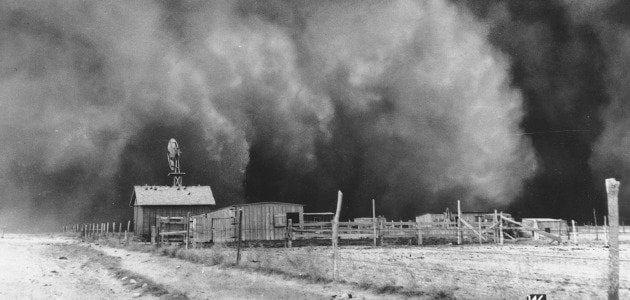
Farming in America was perilous in the 1930s. First, the prices for agricultural products declined precipitously after World War I. Then the Great Depression started in 1929. If this was not enough there were massive dust storms, known as Black Blizzards that swept across the midwest. Children and adults wore masks when they ventured outside. Cattle and humans died of “dust pneumonia”. Then there was a period of prolonged drought. And to add to the misery, there were plagues of Biblical proportions – grasshoppers and jackrabbits. They devoured what crops there were in the Plains states. Thousands of farmers abandoned their farms and headed west. The police in California even set up roadblocks to keep “the okies” (any dust bowl refugee) out. In this presentation, we look at the hardships experienced by farmers during the depression/dust bowl era and the novel ways in which farmers coped (ever hear of canned jackrabbit or dragging a chain behind your car?). We will also look at a myriad of government New Deal programs created to help the farmers. Many of these programs still exist today. We will play a couple of songs from the dust bowl era (Dust Bowl Blues, Dust Pneumonia Blues) from Woodie Guthrie and listen to some audio recordings of people who survived the Dust Bowl. Some folks may see the parallel between what was experienced then and the current Covid-19 pandemic. Life will get better!



